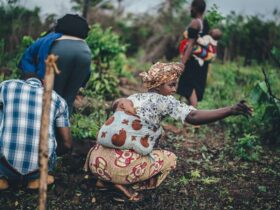Homeless persons have a higher risk of food insecurity. Even though hunger is not universal among the homeless, it is a far more frequent situation than amongst the general population.
There aren’t many data and statistics which explain the link between homeless and hunger, however, we managed to collect all the available data in order to bring you as much information as possible.
Keep on reading and find out everything you need to know.
3 Key Hunger & Homelessness Statistics (Editor’s Pick)
- People rather pay for housing than food.
- The Midnight Mission provides 3 meals a day to the homeless in LA.
- 70% of people in Malaysia who need food assistance are homeless.
11 Hunger & Homelessness Statistics
1. Homeless persons have a higher risk of food insecurity.
According to the data provided by Springer Link, there is a higher risk of food insecurity amongst homeless persons. Worldwide, there are around 150 million homeless people, while 1.9 billion people are moderately or severely food insecure. We can see that homeless persons aren’t always hungry, however, they might fight hunger and starvation at some point in their life.
Source: Springer Link
2. People rather pay for housing than food.
The National Alliance to End Homelessness’ data stated that in 2020, there were over 580,000 Americans who experienced homelessness in a single night. An interesting fact is that hunger often precedes homelessness because people who need to choose between paying for housing or food, often choose the first option.


Source: National Alliance to End Homelessness
3. California has the greatest number of homeless individuals in the country.
Out of all the states in the USA, California and New York has the highest number of homeless people. 22% of California’s population and 16% of New York’s population present homeless people. However, being homeless doesn’t always mean being hungry. Many of those people turn to charitable organizations and food banks.
Source: Civil Eats
4. More than 42 million Americans are food insecure.
Food insecurity is a problem for all people in the USA. More than 42 million Americans don’t have access to an adequate supply of nutrition or affordable food. Besides, they never know if they’ll bring food to the table the next day. Now, that is not always a problem with the homeless person since some of them have access to food assistance and soup kitchens. However, their food insecurity is surely on their mind on a daily basis.
Source: Move for Hunger
5. About 28% of homeless people often don’t get enough food.
According to the survey done by NCH, National Coalition for the Homeless, 28% of homeless persons in the US sometimes or often do not get enough food to eat compared with 12% of poor Americans. The survey stated that 20% of them eat one meal a day or less, while 40% of them didn’t have any food to eat one or more days in the month previous to the survey.
Source: National Coalition for the Homeless
6. The USA has more than 1.5 million nonprofit organizations.
In 2021, there are millions and millions of charitable food services where the food is served to poor and homeless people. These places include homeless shelters, soup kitchens, and drop-ins. In America only, there are more than 1.5 million registered nonprofit organizations, according to the National Center for Charitable Statistics. The number includes private foundations, public charities, and any other type of nonprofit organization.
Source: Homeless Hub and National Center for Charitable Statistics
7. The Midnight Mission provides 3 meals a day.
The Midnight Mission is located in Los Angeles and South Bay. The organization is helping with the homeless crisis since 1914 by providing assistance to the homeless and offering them access to shelter, clothing, food, and medical care. The Midnight Mission provides homeless people three meals a day, every day.
Source: Los Angeles Times
8. About 10% of the clients of Feeding America are homeless.
Food insecurity and hunger are linked to low-income or non-reliable income sources. Due to that, the homeless people are the most vulnerable group. According to the National Homeless, around 10% of people who turn to Feeding America for food assistance are without a place to live. When it comes to homeless people, they put a steady job, income, housing, and good health above obtaining food. That’s why people are mostly fighting against food insecurity and not homelessness.


Source: National Homeless
9. In Malaysia, 70% of people who need food assistance are homeless.
The data provided by The Straits Times stated that Malaysia has a high number of homeless and poor people. According to the available statistics, 70% of people who visit food banks for food assistance are homeless, while 30% of them are poor. Unlike people in America, those in Malaysia put food security in the first place, while housing is a couple of points down.
Source: The Straits Times
10. Homeless and destitute are suffering from starvation in India.
India has more than 4 million homeless people. They have had no way of earning a living and they, along with the destitute, are suffering from hunger and starvation. According to GlobalGiving, every day 100 hungry homeless get food donations and fruits in lunch. The aim of GlobalGiving is to feed hungry people including destitute, abandoned senior citizens, and migrant workers.
Source: GlobalGiving
11. Over one million people are homeless in the Central African Republic.
The key factors that led the population of the Central African Republic to homelessness are poverty, Civil War, and floods. Many people are living on less than $1.90 per day. Due to that, they cannot afford adequate housing or much-needed and nutritious food.
Source: The Borgen Project
To Wrap It Up
As we could see, not all homeless people have a lack food assistance nor are they fighting hunger and starvation. Of course, everything depends on the country we’re talking about. Despite that, many people are suffering from both problems at the same time, while the demand for food assistance and shelters is only getting higher and higher. No doubt that homelessness and hunger will be linked even more in the upcoming years, especially due to the ongoing COVID-19 pandemic.


















Leave a Reply